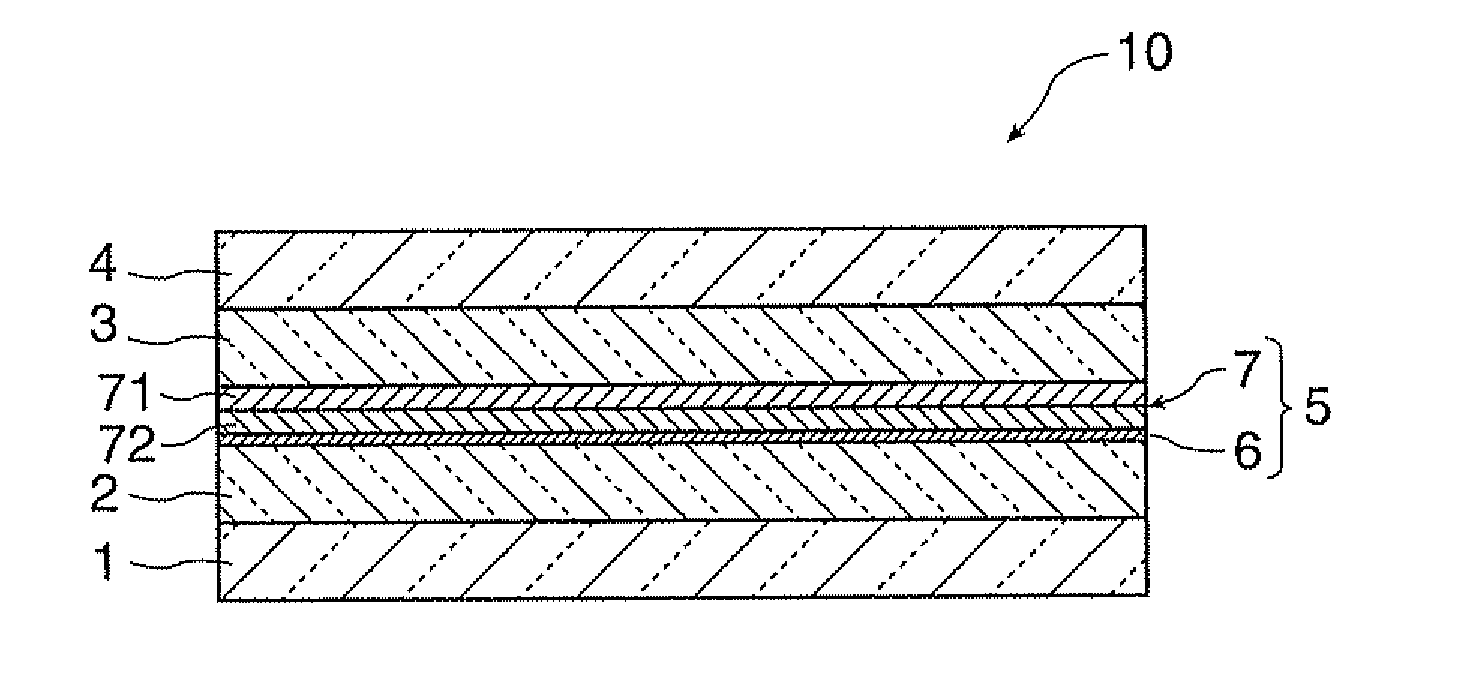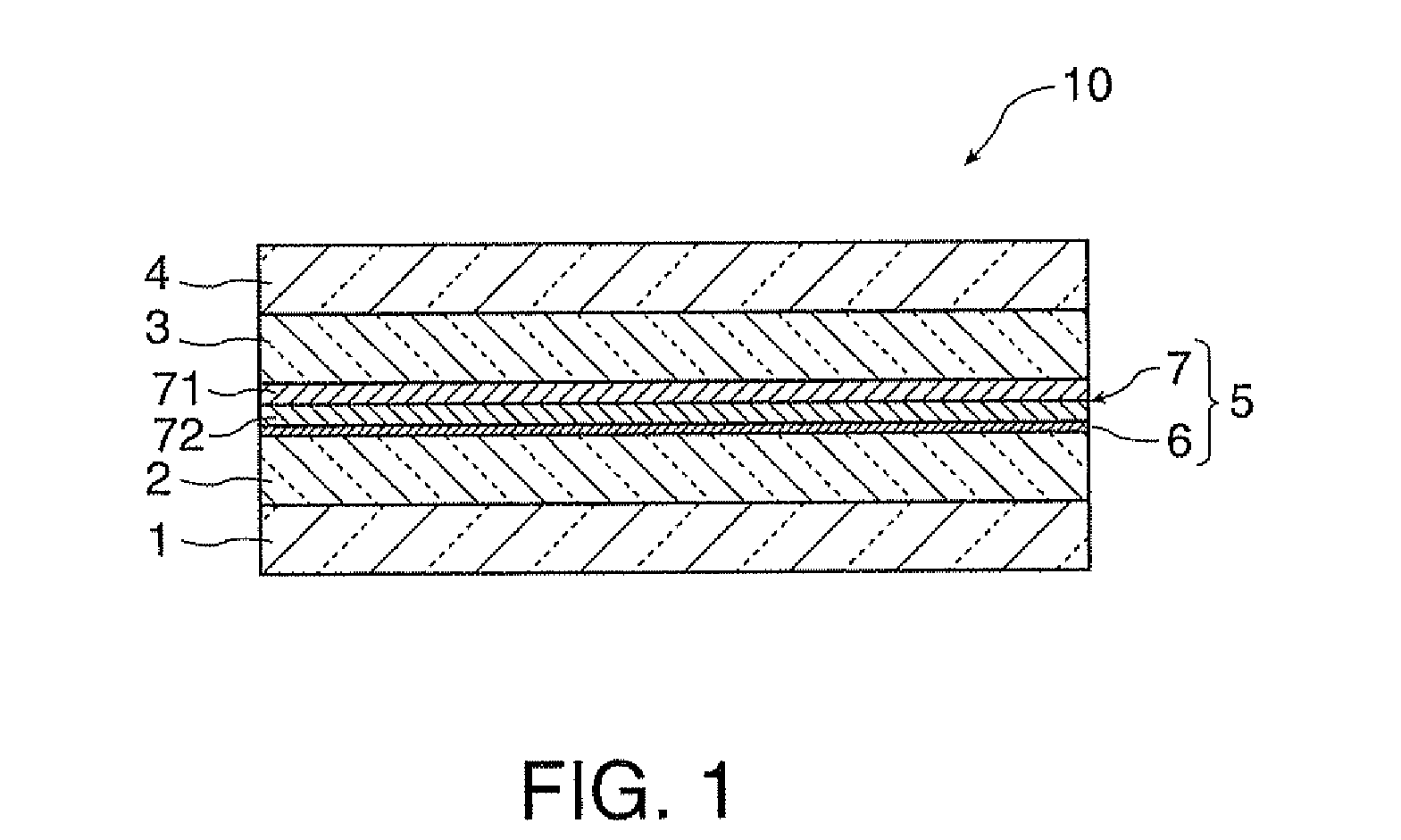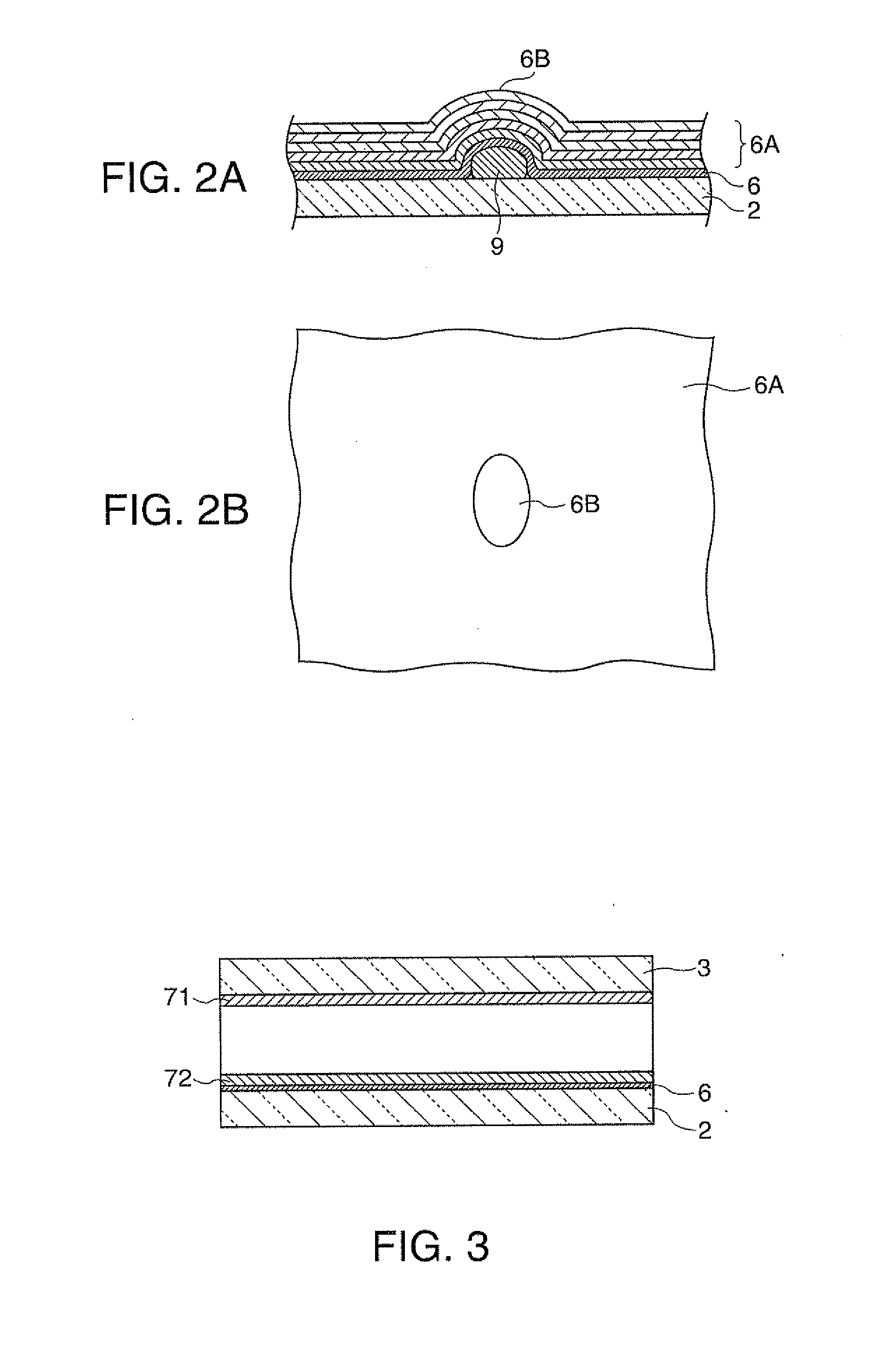Bonding film-attached substrate and bonding film-attached substrate manufacturing method
a film-attached substrate and film-attached technology, which is applied in the direction of instruments, record information storage, transportation and packaging, etc., can solve the problems of serious wavefront aberration, discoloration or adhesion failure, and difficulty in manufacturing methods
- Summary
- Abstract
- Description
- Claims
- Application Information
AI Technical Summary
Benefits of technology
Problems solved by technology
Method used
Image
Examples
second embodiment
[0197]The following describes Second Embodiment of the present invention with reference to FIGS. 12A and 12B to FIGS. 16A and 16B. FIG. 12A is a schematic structure view illustrating an optical element provided with a bonding film-attached substrate according to Second Embodiment of the invention. FIG. 12B is a magnified cross sectional view illustrating a relevant portion of the optical element.
[0198]Second Embodiment is an example of the optical element as a polarization separation element 20, called a PS conversion element. The polarization separation element 20 is used by being incorporated in, for example, a liquid crystal projector.
[0199]In FIGS. 12A and 12B, the polarization separation element 20 of Second Embodiment is shown as a laminate that includes a first glass-base material 23, and a second glass-base material 22 provided as a substrate bonded to the first glass-base material 23 via a polarization separation-conversion layer 21 or a reflecting film 24. Note that the se...
third embodiment
[0228]The following describes Third Embodiment of the present invention with reference to FIGS. 18A and 18B. FIG. 18A is a schematic plan view of an optical element provided with a bonding film-attached substrate according to Third Embodiment of the invention. FIG. 18B is a schematic structure view of the optical element.
[0229]Third Embodiment is an example of the optical element as an aperture filter 30. The aperture filter 30 is used by being incorporated in, for example, a pickup device.
[0230]As illustrated in FIGS. 18A and 18B, the aperture filter 30 of Third Embodiment includes a quartz crystal wave plate 31 (adherend), and a glass base material 32 provided as a substrate. Note that the glass base material 32 does not include silicon dioxide as the main component, or does not have a Si-group skeleton, and is, for example, a phosphate glass member.
[0231]The wave plate 31 includes a phase adjuster 311 and a wavelength selector 312. The phase adjuster 311 allows for passage of lig...
fourth embodiment
[0237]The following describes Fourth Embodiment of the present invention with reference to FIG. 19. FIG. 19 is a schematic plan view of an optical element provided with a bonding film-attached substrate according to Fourth Embodiment of the invention.
[0238]Fourth Embodiment is an example of the optical element as a diffraction grating-equipped wave plate 40 (hereinafter, simply “wave plate 40”). The wave plate 40 is used by being incorporated in, for example, a pickup device.
[0239]As illustrated in FIG. 19, the wave plate 40 of Fourth Embodiment is a laminate that includes a crystalline retardation plate 41 (adherend), a glass base material 42 provided as a substrate and bonded to a retardation plate 41, and a polarizing element 43 provided on the retardation plate 41 opposite from the glass base material 42. Note that the glass base material 42 does not include silicon dioxide as the main component, or does not have a Si-group skeleton, and is, for example, a phosphate glass member...
PUM
| Property | Measurement | Unit |
|---|---|---|
| thickness | aaaaa | aaaaa |
| temperature | aaaaa | aaaaa |
| temperature | aaaaa | aaaaa |
Abstract
Description
Claims
Application Information
 Login to View More
Login to View More - R&D
- Intellectual Property
- Life Sciences
- Materials
- Tech Scout
- Unparalleled Data Quality
- Higher Quality Content
- 60% Fewer Hallucinations
Browse by: Latest US Patents, China's latest patents, Technical Efficacy Thesaurus, Application Domain, Technology Topic, Popular Technical Reports.
© 2025 PatSnap. All rights reserved.Legal|Privacy policy|Modern Slavery Act Transparency Statement|Sitemap|About US| Contact US: help@patsnap.com



